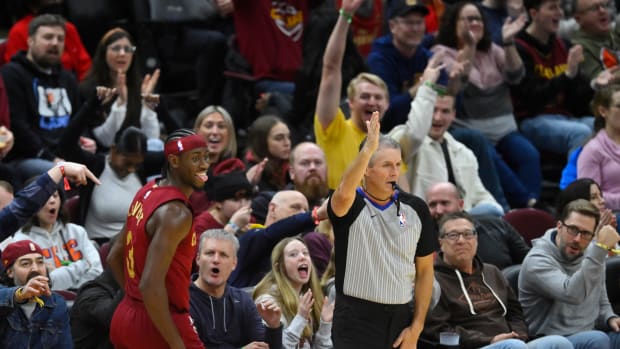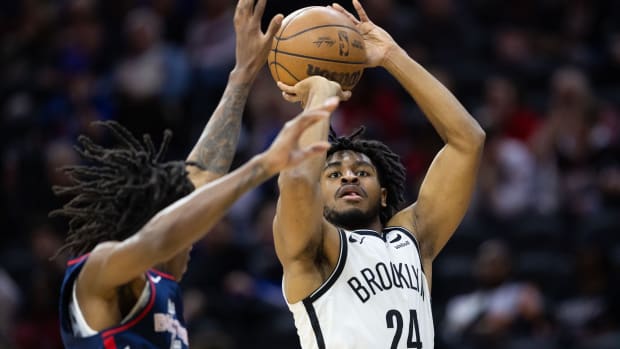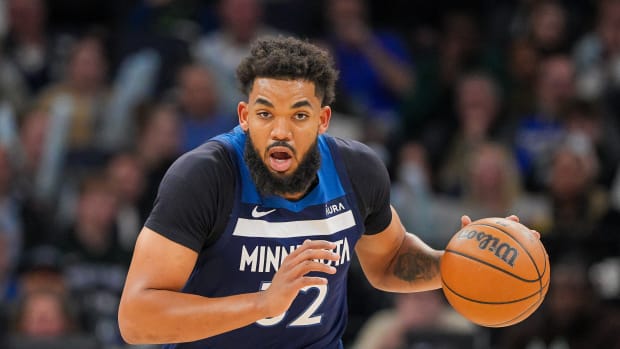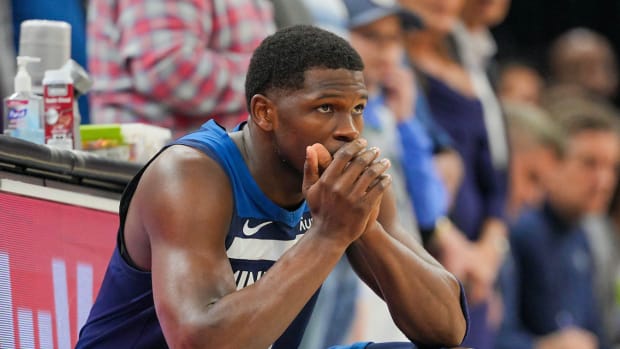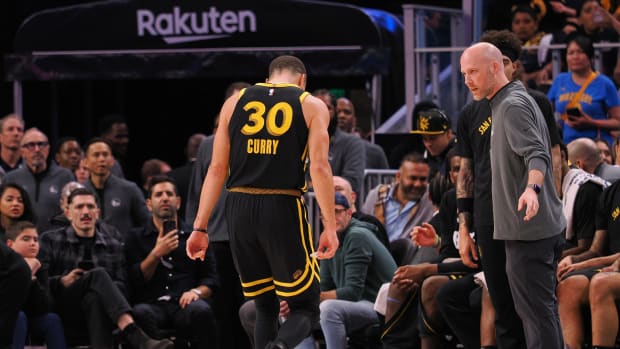The NBA's New Terror: Defending Kawhi Leonard
There is an unmistakable anxiety that washes over a crowd once it realizes that no possession is safe. Kawhi Leonard knows it well. He draws it out, almost incidentally, by poaching the ball right out from an opponent’s clutches or lunging in to revoke a passing lane. Opposing offenses seize around him. No casual pass or routine shot attempt will do so long as Leonard is around, which leads rivals to clam up and overthink their moves in an attempt to play it safe. Their stammering hesitations offer no way out. Leonard still takes what he wants, streaking from steal to dunk to the sound of a murmuring, unsettled audience.
Last season brought to bear the idea that a defender that fearsome could dole out further punishment as a star scorer. The first week of Leonard's follow-up campaign has only expanded on that harrowing premise. On opening night, the reigning Defensive Player of the Year dropped 35 points on just 21 shots against the most talented team in the league. Sacramento suffered 30 points on 21 attempts the next game and New Orleans "held" Leonard to 20 points on 12 shots by failing to keep the game competitive in the fourth quarter. The ensuing night in Miami, Leonard picked back up with another 27 points on 16 tries. Even in a league that swirls around LeBron James and the vaunted Warriors, this could quietly become the Year of Kawhi. Observe:
Leonard, now 25, is one of the league's most difficult scorers. It's not that he's unstoppable—it's that even mounting resistance requires more of opponents every year, beginning with the toll Leonard exacts through his own coverage. Escaping Leonard on any regular basis is a labor of misery. Creating separation with a live dribble means darting past one of the longest wing defenders in the game and working over one of its strongest. Every bump along the way is generally to Leonard's benefit; he is much more likely to knock a creator off-balance than vice versa. Life away from the ball is no simpler. Cuts are tracked closely. Curls are controlled. Even creating enough of a buffer from Leonard to catch a pass requires a significant investment with no guarantees.
Rare are the opponents who can detach from Leonard consistently enough to score at an efficient clip and rarer still are those who would still have energy left to slow Leonard's own roll after doing so. That's the trick. For as taxing as it is on Leonard to carry so much responsibility on both ends of the floor, he spends the majority of his time operating against opponents much less qualified to match him. Leonard tends to make life more hellish for his adversaries than they ever could for him, rendering the Spurs a distinct advantage in most every contest.
These are battles of attrition that Leonard is predisposed to win. First-rate isolation play, unthwartable in its simplicity, became a staple of his game last season. Leonard's one-on-one skills seem only to have matured since:
“He basically tells me what he wants to do now,” Gregg Popovich recently said. "I mean, he’ll take the ball and send the screener away. He’ll decide if he wants to go one-on-one with no screen, no pick … he is much more demonstrative, looks for his shots more. He knows he’s got a green light, and I think that’s the difference."
Yet in San Antonio's handful of games thus far, Leonard has also more than doubled his possession usage in the pick-and-roll relative to last season, according to Synergy Sports. One of the more effective all-around scorers in the league has made a pointed move toward off-the-dribble dynamism. Leonard already had the first step to slink past any defender who didn't square up to guard him. Now he's building familiarity with another device to nudge opponents out of position—and into the blender.
The fact that Leonard can now pick his spots so deliberately is a product of an increasingly confident handle. Shot creation in the NBA did not come naturally for Leonard, though you'd never know that from watching him throw defenders with a smooth inside-out dribble:
Shifting to a more downhill style has yielded predictably terrifying results. Leonard, now unleashed, is slippery enough to get a step on his opponents and bait them into contact. Thus far he has averaged 10 trips to the free throw line a game—a dramatic uptick from his 4.6 attempts on average last season. Leonard has eclipsed that mark in every game to date and twice racked up free throws in double digits. In the course of his hot start, Leonard has also become a sort of yeoman playmaker. There's nothing unique or spectacular about Leonard's vision in this capacity. Yet by leveraging his way into different kinds of advantages, the All-NBA forward has filled one of the few remaining gaps in his game and mustered 4.9 assists per 36 minutes. A lot of good can come of being strong, skilled, and well-meaning.
SI.com's Top 100 NBA players of 2017
True to form, Leonard has accomplished all of this—attacking more, assisting more, and operating in traffic more—while squandering little. One of the most stunning turnover rates (7.4%) in the league has gone largely untouched. Leonard has totaled 39 discrete pick-and-roll possessions through four games this season. Some have ended in scores, some assists, and some misses. Only two ended in a turnover—a rarity which obscures the fact that Leonard is still relatively new at all of this.
Leonard, in that peculiar way, seems immune to conventional tradeoffs. He isolates without much cost to his efficiency. He ratchets up his playmaking without giving away possessions. He busts ass through full defensive sequences and carries the weight of San Antonio's offense without seeing his effectiveness dull to fatigue. The defiance in Leonard's game extends even to basketball's understood truths—somehow stifling of logic itself.
































